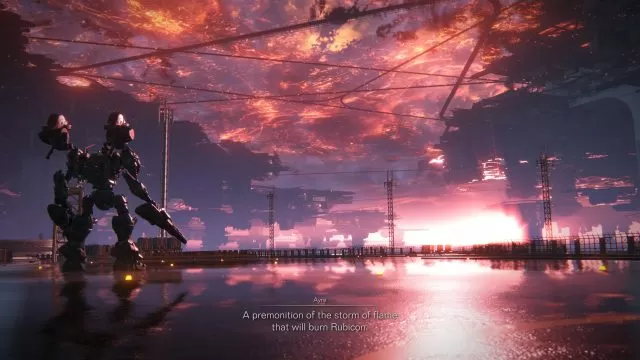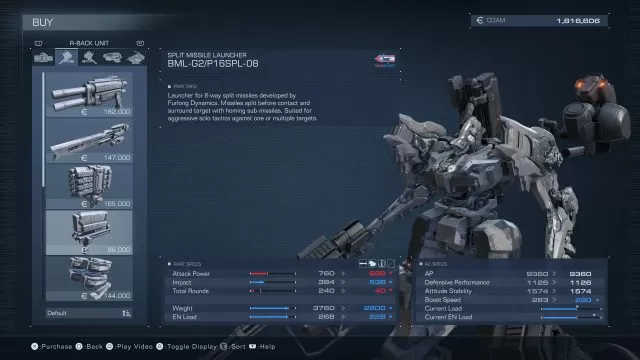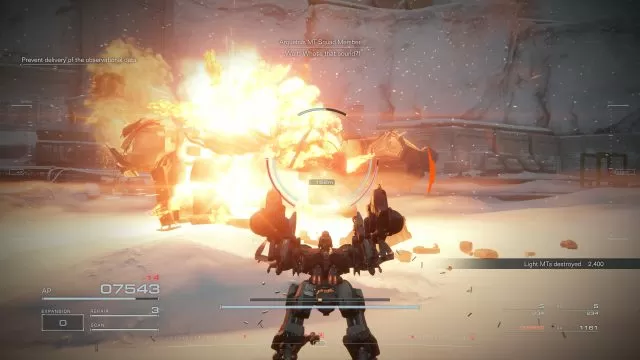Armored Core 6: Fires of Rubicon Review – Fire and Fury
Long before Dark Souls fame, FromSoftware was known for its console-centric mecha franchise. In Japan, they love their giant fighting robots, and Armored Core thrived in the late nineties as a PlayStation exclusive. The series’ emergence in 2007 on Xbox 360 (Armored Core 4) brought the franchise to the broader Western audience, who was mostly indifferent to its specific take on robotic combat. Simply put, Armored Core was no BattleTech. AC games, with their cryptic storytelling, low accessibility, and complex mecha customization rules attracted only the hard-core. After the breakaway success of their Soulsborne titles, FromSoftware put the lid on the AC, vowing to return at some point.
Hiatus ended on August 26th, 2023 with Armored Core 6: Fires of Rubicon, their latest, and arguably, the greatest Armored Core title. What’s so great about it? First, it’s no longer weird and clunky. More MechWarrior than Gundam, Fires of Rubicon dances its robotic dance in a style that appeals to a much wider player base. It’s a Japanese mecha game without mecha anime DNA if you will. It still has a distinct visual style that makes it impossible to confuse it with something else. The substance is, hovewer, much more digestible.
Don’t expect a plot that’s easy to follow

Armored Core 6: Fires of Rubicon tells the story of a genetically modified mercenary, piloting the Armored Core on the planet Rubicon, the only source of mysterious Coral substance. For reasons never adequately explained, Coral has the importance similar to the Spice melange from the Dune universe. Corporations are battling for its scarce deposits, and your mysterious handler Walther seems to wish to profit from that multi-vectored struggle. Being a FromSoft game, Fires of Rubicon dabbles in mysticism, adding layers of ambiguous lore bits to the story. At some point in the past, Coral reserves exploded, causing widespread destruction. Cinders are still burning, announcing the rebirth and the new age. Yeah, I’m also smelling a distinct Dark Souls vibe here. But that’s just FromSoft, they are required by law to muddy the waters of the concise storytelling.
To fully comprehend what is going on here, you’ll need to complete the game thrice. Same as NieR: Automata, New Game+ and Game++ modes of AC6 offer brand new missions that shine the light on different aspects of the story, enabling you to see the struggle from the point of alternative factions. Or you can plow through the game once and wait for VaatiVidya to chew and digest the finer points for you.
Baltheus, oh how I loathed thee!
The game has a mission-based structure, branching into several key points that will lead to one of three possible endings. At the end of each chapter, you must defeat the boss which is far more difficult than the trash mobs you plowed thru leading up to it. The disproportion between the relative ease of missions and the bosses that feel impossible on the first try is staggering. FromSoftware toys with your expectations of gradual challenge, facing you with the hardest boss in the game at the end of the second chapter. Expect to spend several miserable hours hitting the brick wall that is Baltheus, the autonomous craft with a shield, missile barrages, and a flaming exhaust. Yes, It’s a skill check, but they overdid it. This isn’t Elden Ring where I can dart off somewhere else if some monstrosity feels unbeatable.
Each completed chapter unlocks more parts for your Armored Core, as well as arena challenges that award the chips for permanent upgrades. At some point, you will also unlock multiplayer. Experimenting with the AC loadouts is an essential part of the game. Even if you can complete most missions carrying practically anything, the boss fights require a careful approach.
Sometimes, a good setup can trivialize the challenging encounter. At the end of the first chapter, for example, you will face Juggernaut, the armored tank which is invulnerable to front and side damage. You can dance around it, carefully timing the boosts and dodges, trying to reach its vulnerable ass. Alternatively, if you are a man of culture, you can purchase and equip plasma missile launchers. Those strike vertically, like American Javelin ATGM, reaching the Jugg’s sensitive backside with its AoE. You can spam plasma and kill it without breaking a sweat.
Detailed customization

Armored Core 6: Fires of Rubicon is a fast, kinetic action game. You could call it a pseudo-simulation, considering the breadth of customization options and the necessity for a tactical approach to bosses. The speed and agility of your AC depends on the parts of the chassis. The general rule is that heavier legs, torsos, heads, and arms weigh more, provide more HP, and have a greater load-bearing capacity, but offer inferior dodge-boosting compared to lighter builds. Legs are a crucial part of the mobility equation. Normal, bipedal ones offer the middle ground between capacity and mobility. Reverse-jointed legs (chicken legs) are faster and lighter, quad-legs enable limited-time hovering in mid-air, etc. Or you can opt for tank treads, permitting the heaviest weapon builds.
The vistas in the game are universally grandiose, with a lot of verticality and (usually) plenty of room to maneuver. No matter the build you are using, you will always exploit the terrain to your advantage, booster-jumping behind the hills or industrial machinery like an attack helicopter with arms. Most of the time, the game feels like an unmitigated power fantasy, as hordes of inferior mechs perish in the pyrotechnic hell of your making.
Cross the Rubicon, you know you want it

Considering the sad fact that BattleTech is nowadays struggling to attract an audience, in part due to the underwhelming MechWarrior 5: Mercenaries, it’s good to have at least one good big robotic alternative. Armored Core 6: Fires of Rubicon was released on PC alongside Xbox and PlayStation, putting aside the exclusivity that hardly benefited the franchise in the past. The game requires skill and patience, but the long-term commitment, endemic to other FromSoft titles, is entirely optional. The balance between boss fights and everything else could have been better, though. Still, the undeniable fact is that there’s nothing comparable in the market, at least in a sense of quality and pedigree.
Highs
- Fast and kinetic pseudo-sim with seriously impressive visuals.
- Game + and ++ modes offer substantial replayability through unique missions.
- First Armored Core released on PC apart from consoles.
Lows
- The story is overly cryptic and difficult to care about.
- The discrepancy in difficulty between boss fights and everything else is far too great.

